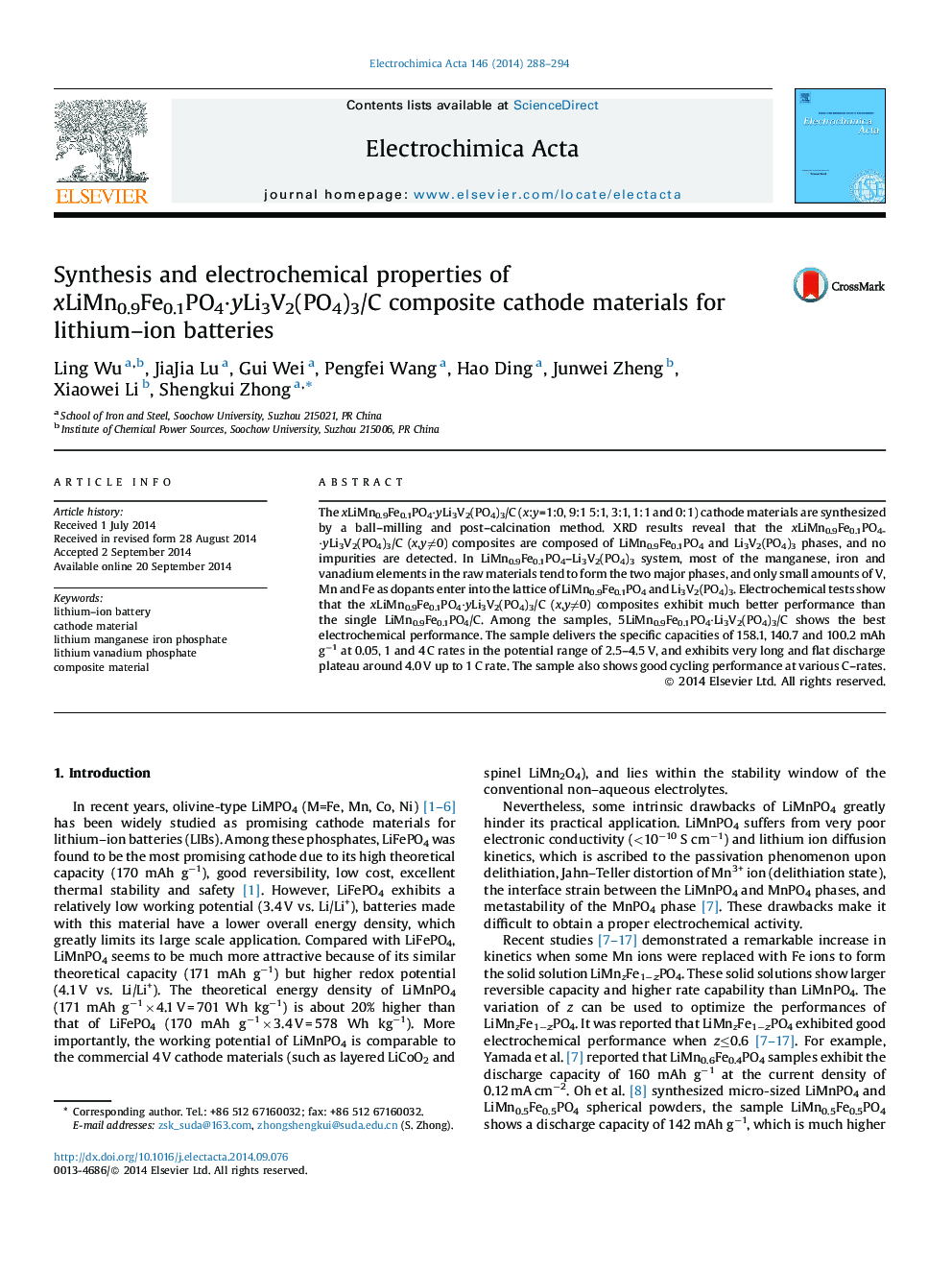| Article ID | Journal | Published Year | Pages | File Type |
|---|---|---|---|---|
| 6612758 | Electrochimica Acta | 2014 | 7 Pages |
Abstract
The xLiMn0.9Fe0.1PO4·yLi3V2(PO4)3/C (x:y=1:0, 9:1 5:1, 3:1, 1:1 and 0:1) cathode materials are synthesized by a ball-milling and post-calcination method. XRD results reveal that the xLiMn0.9Fe0.1PO4·yLi3V2(PO4)3/C (x,yâ 0) composites are composed of LiMn0.9Fe0.1PO4 and Li3V2(PO4)3 phases, and no impurities are detected. In LiMn0.9Fe0.1PO4-Li3V2(PO4)3 system, most of the manganese, iron and vanadium elements in the raw materials tend to form the two major phases, and only small amounts of V, Mn and Fe as dopants enter into the lattice of LiMn0.9Fe0.1PO4 and Li3V2(PO4)3. Electrochemical tests show that the xLiMn0.9Fe0.1PO4·yLi3V2(PO4)3/C (x,yâ 0) composites exhibit much better performance than the single LiMn0.9Fe0.1PO4/C. Among the samples, 5LiMn0.9Fe0.1PO4·Li3V2(PO4)3/C shows the best electrochemical performance. The sample delivers the specific capacities of 158.1, 140.7 and 100.2 mAh gâ1 at 0.05, 1 and 4 C rates in the potential range of 2.5-4.5 V, and exhibits very long and flat discharge plateau around 4.0 V up to 1 C rate. The sample also shows good cycling performance at various C-rates.
Keywords
Related Topics
Physical Sciences and Engineering
Chemical Engineering
Chemical Engineering (General)
Authors
Ling Wu, JiaJia Lu, Gui Wei, Pengfei Wang, Hao Ding, Junwei Zheng, Xiaowei Li, Shengkui Zhong,
